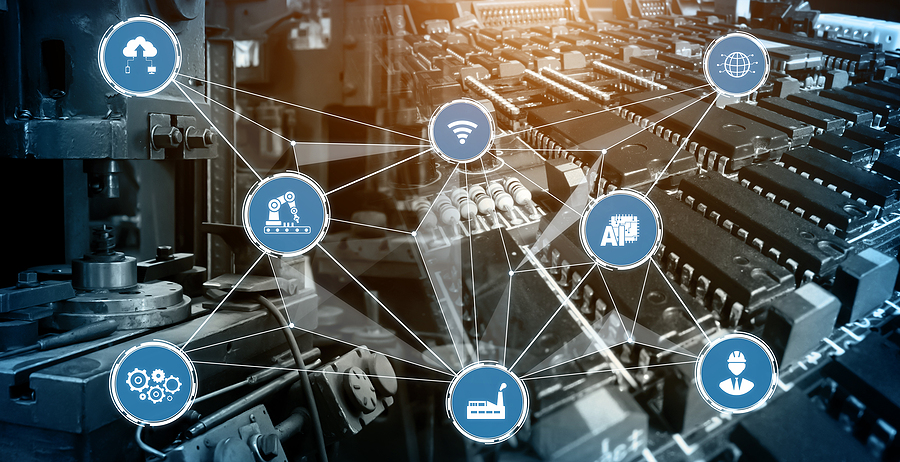
5 Manufacturing Systems & Their Benefits – Which is Right for Your Business?
Not every manufacturer has the same needs. As a result, various manufacturing systems and approaches have been developed, each with its own benefits and use-cases.
Familiarity with these systems is essential for any business that needs to understand what’s available or what a given manufacturer is capable of.
These are five of the most popular options, why businesses use them, and how they may benefit a manufacturer.
1. Custom Manufacturing
The custom manufacturing system is the oldest and most popular approach. Skilled craftspeople produce every item by hand, typically with the help of equipment. Machines used are generally built for a specific purpose and can only help a worker create a single product at a time.
Custom manufacturing is associated with high costs, long production times, and high quality. Items manufactured this way are often bespoke and unique. Each product can be customized to a client’s specific needs and desires.
Examples of custom manufacturing include certain medical devices, architectural elements, and military weapons. This applies to items produced on an on-demand basis, one at a time.
The approach is not practical for products that need to be mass-produced. Batches of a large enough size may also not work with a custom manufacturing system. For this reason, most large manufacturers use other methods that allow them to produce more items at a time.
2. Job Shop or Batch/Intermittent Manufacturing
The job shop manufacturer aims to create small batches of various custom products for clients. Most items that the shop produces need unique setup and process sequencing — meaning that switching from the manufacture of one product to another can be challenging.
Most job shops manufacture custom components for business clients, like machine shops, gear manufacturers, and metal fabricators.
In some cases, job shop manufacturing may be very close to a custom manufacturing system and produce just a few items at a time. Other shops may make larger batches.
This manufacturing system makes the most sense for businesses that manufacture tailored items in small quantities for clients but do not necessarily create custom orders. When necessary, job shops will typically customize existing stock rather than create new orders from scratch.
3. Continuous-Flow or Process Manufacturing
Continuous-flow manufacturing systems are built for the mass production of a single product. As the name implies, the process flow in this system aims to be continuous, with raw materials coming in and finished products going out.
Unlike batch or job shop manufacturing, there are no breaks or stops between each step of the manufacturing process in a continuous-flow system. Instead, goods simply move from one stage to another.
Continuous-flow systems are all about volume and producing large amounts of products at the lowest cost possible. However, they may be designed to operate continuously at all times.
These systems are the go-to choice for manufacturers that need to produce a massive quantity of very similar products. Customization is typically minimal or none.
Examples of businesses that use continuous-flow manufacturing systems include mass-manufactured food and beverage products, cosmetics and plastic containers.
4. Modular Production or Manufacturing
The modular approach is another manufacturing strategy that aims to balance mass-production with flexible workflows that adapt to changing market conditions or client needs. With modular production, a manufacturing facility is designed with multiple process modules that can be slotted in and out of the site’s workflow as needed.
These modules enable a plug-and-play approach to manufacturing, where the overall production process can be quickly retooled to produce different products or components as needs dictate.
The approach can help reduce production costs by 40% and decrease time-to-market by 50%. This is often a good option to consider for businesses that need mass-production capabilities but want to remain flexible.
5. Additive Manufacturing
Additive manufacturing is less a system of manufacturing and more of a technology. Tools like 3D printers allow manufacturers to create objects by steadily adding material to a base. This is unlike the more common approach of subtractive manufacturing, where a machine or worker removes material from an object to produce a component or product.
Additive manufacturing is often less wasteful and more cost-effective than subtractive manufacturing. A 3D printer or similar machine will only use the material it needs to produce a product, so businesses will have to worry less about reusing or recycling the waste typically produced by subtractive manufacturing.
The technology is somewhat new and has significant limitations — especially for businesses trying to mass-produce goods.
The additive approach to manufacturing is most useful for businesses that need to create small batches of products and manufacture customized parts or rapidly prototype designs. However, companies will find the cost-reduction benefits of additive manufacturing will start to shrink and eventually disappear with larger orders.
Manufacturing Systems Help Companies with Different Needs
Different manufacturing systems allow companies to produce goods that meet the various needs of customers.
Custom and batch manufacturing systems work best for companies that need to produce low-volume, bespoke orders for their customers, typically other businesses. Continuous-flow and modular manufacturing help businesses that need to create large batches of products, typically with less need for customization. Companies need to tailor their method and find the best fit for their operation.
*This article is written by Devin Partida. Devin is a tech writer with an interest in IIoT and manufacturing. She is also the Editor-in-Chief of ReHack.com.






